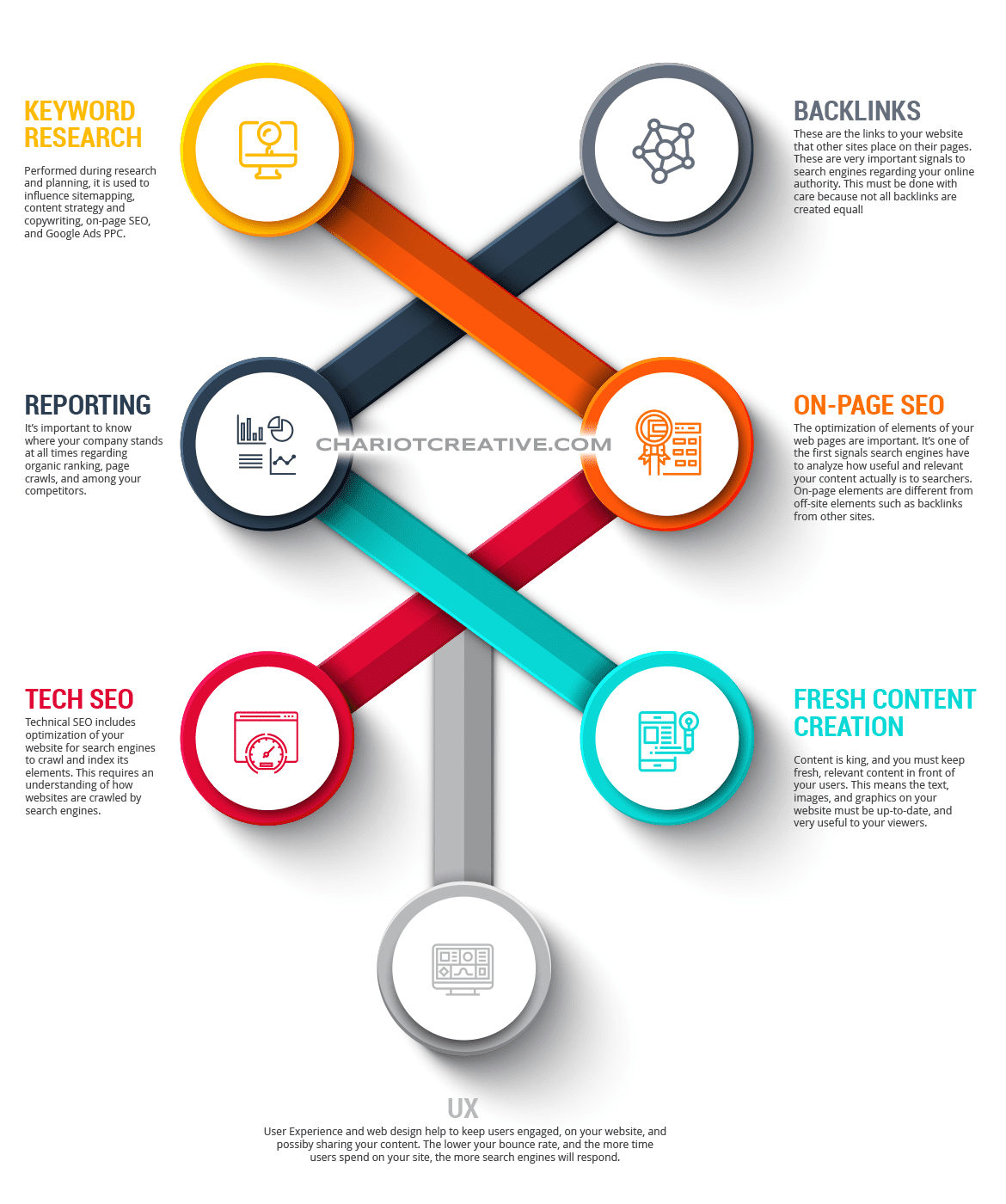You can’t afford to ignore search engine optimization (SEO). It’s incredibly important and ever-changing (thanks for keeping us on our toes, Google!) And even if you don’t go all in on tackling it, there are at the very least some critical basics to get in place so you have a foundation to build on.
SEO used to able to be manipulated with fast, black-hat tactics. Google doesn’t tolerate that anymore. Google owns 92% of the search engine market share, and which means we must play by Google’s rules in a very competitive landscape. These two facts have turned SEO into even more of a complex niche than it ever was.
Search engines use a variety of “ranking factors” to determine which websites are the most authoritative and relevant for answering a search query. Both take a combination of technical know-how on-site, content strategy, and off-site link- and reputation-building.
Users additionally affect this by spending quality time on your site, sharing it, etc. Great UX, design, and content planning work from one angle, while thoughtful sitemapping, URLs, tags, schema markup, internal link structure, backlink profiles, and site speed talk to Google from another.


Optimization of your website for search engines to crawl and index its elements. This requires an understanding of how websites are crawled by search engines.
This is the optimization of elements of a website, as opposed to off-site elements such as backlinks from other sites.
This is a step we perform during our research and planning phase of work. It is used to influence sitemapping, content strategy and copywriting, on-page SEO, and Google Ads PPC.
These are the links to your website that other sites place on their pages. These are very important. Not all backlinks are created equal!
Google Ads PPC is a great way to get clicks to your site right from page 1 search results when you don’t have the organic rankings yet on that page. Fill the gap!
* Source: searchenginejournal.com.
Message Sent successfully